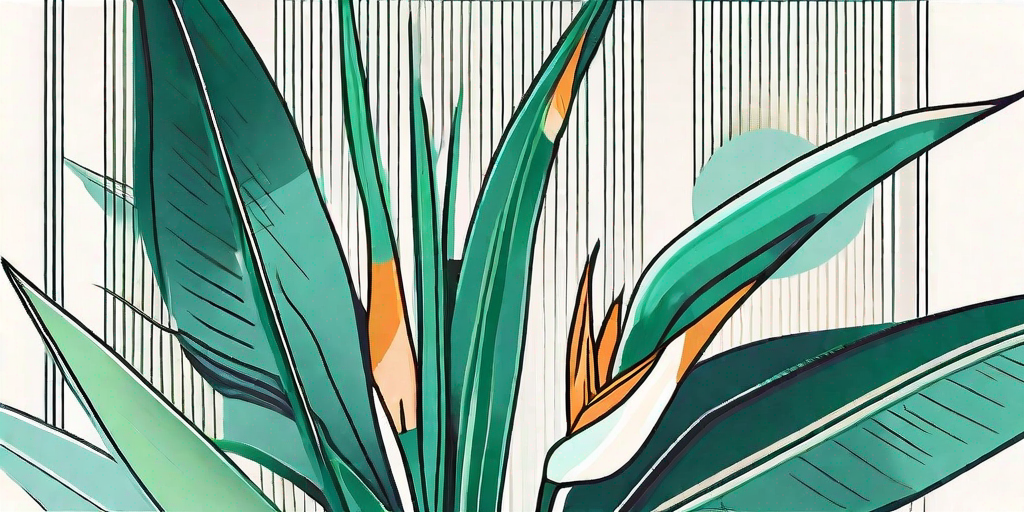
The Bird of Paradise plant, or Strelitzia Reginae if you want to get fancy, is a tropical beauty that can turn any living room into a lush, vibrant oasis. But, like any diva, it demands a bit of attention and care. Fear not, dear reader, for we're about to embark on a journey to the heart of the tropics, right from the comfort of your couch.
Understanding Your Bird of Paradise
Before we dive into the nitty-gritty of plant care, let's take a moment to appreciate the Bird of Paradise. Native to South Africa, this plant is known for its large, glossy leaves and stunning flowers that resemble a bird in flight. Hence, the name. Clever, right?
Now, don't let its exotic origins intimidate you. While it might prefer a tropical climate, the Bird of Paradise is surprisingly adaptable and can thrive indoors with the right care. So, put away your Hawaiian shirt, there's no need to crank up the heat just yet.
Size and Growth
The Bird of Paradise can grow up to 6 feet tall indoors, which is perfect if you're trying to hide that stain on the wall from your last party. Its leaves can reach up to 18 inches long, providing a lovely green backdrop for its vibrant flowers.
Keep in mind, though, that indoor Birds of Paradise typically bloom less frequently than their outdoor counterparts. But don't worry, when they do bloom, it's a sight to behold.
Light and Temperature
As a tropical plant, the Bird of Paradise enjoys plenty of light and warm temperatures. It's not a fan of the cold, so keep it away from drafty windows in the winter. And while it loves the sun, direct sunlight can scorch its leaves, so a spot with bright, indirect light is best.
As for temperature, aim for a range between 65 and 85 degrees Fahrenheit. Anything below 50 degrees is a no-go. Remember, this is a tropical plant, not a polar bear.
How to Care for Your Bird of Paradise
Now that we've covered the basics, let's move on to the care instructions. Don't worry, it's not rocket science. With a bit of love and attention, your Bird of Paradise will be the envy of all your houseplant-loving friends.
And remember, talking to your plants is not crazy. It's called being a good plant parent.
Watering and Feeding
The Bird of Paradise likes its soil to be kept moist, but not waterlogged. Overwatering can lead to root rot, which is as nasty as it sounds. So, water your plant thoroughly, then let the top inch of soil dry out before watering again.
As for feeding, a slow-release fertilizer applied in the spring and summer will keep your plant happy and healthy. Just remember, less is more. Overfeeding can lead to salt buildup in the soil, which can damage the roots.
Pruning and Repotting
Pruning your Bird of Paradise is a bit like giving it a haircut. It helps to keep it looking neat and encourages new growth. Simply remove any dead or yellowing leaves with a pair of sharp scissors.
Repotting should be done every two to three years, or when the plant becomes root-bound. You'll know it's time when you see roots growing out of the drainage holes. When repotting, choose a pot that's one size larger than the current one and use a well-draining soil mix.
Common Problems and How to Solve Them
Like any plant, the Bird of Paradise can encounter a few problems. But don't panic, most of these issues are easily solved with a bit of know-how.
And remember, a problem shared is a problem halved. Or in this case, a problem posted on a plant forum is a problem solved by a bunch of plant nerds.
Brown Leaf Tips
If the tips of your Bird of Paradise's leaves are turning brown, it could be due to low humidity or underwatering. Try misting the leaves with water or placing a tray of water near the plant to increase humidity. If that doesn't work, check the soil. If it's dry, give your plant a good drink.
Yellow Leaves
Yellow leaves can be a sign of overwatering or poor drainage. Check the soil and make sure it's not waterlogged. If it is, you might need to repot your plant in a well-draining soil mix.
FAQs
- Why is my Bird of Paradise not flowering?
Indoor Birds of Paradise often bloom less frequently than outdoor ones. It could also be due to insufficient light or nutrients. Make sure your plant is getting plenty of bright, indirect light and is being fed regularly during the growing season.
- Can I grow a Bird of Paradise from a cutting?
Yes, you can propagate a Bird of Paradise from a cutting, although it's a bit more challenging than with other plants. The cutting should include a piece of the plant's rhizome and be planted in a well-draining soil mix.
- Is the Bird of Paradise toxic to pets?
Yes, the Bird of Paradise is toxic to dogs and cats if ingested. So, if you have curious pets, it's best to keep this plant out of their reach.
So, there you have it. Everything you need to know to turn your living room into a tropical paradise. Now, go forth and be the best plant parent you can be. And remember, if all else fails, there's always plastic plants.















